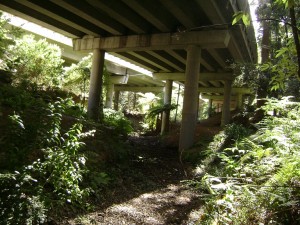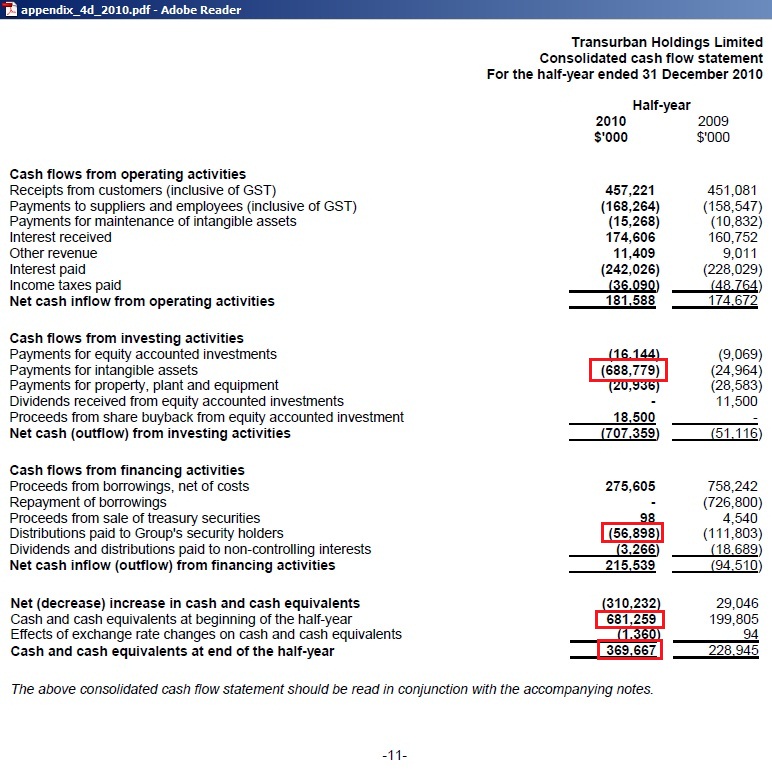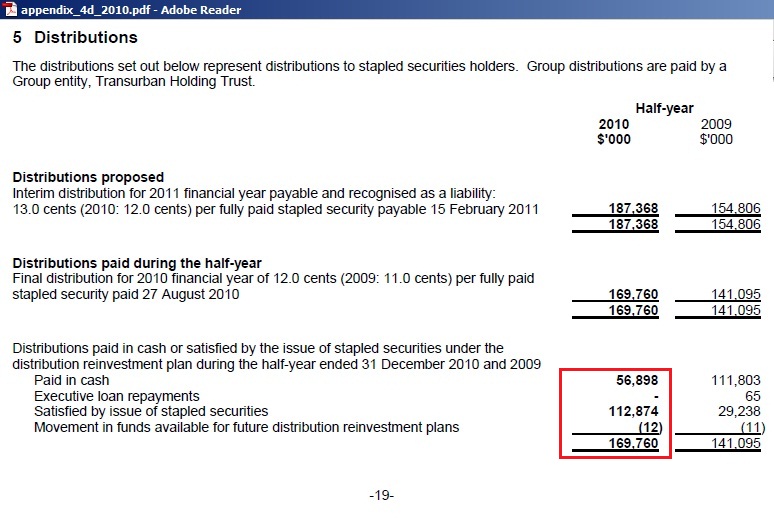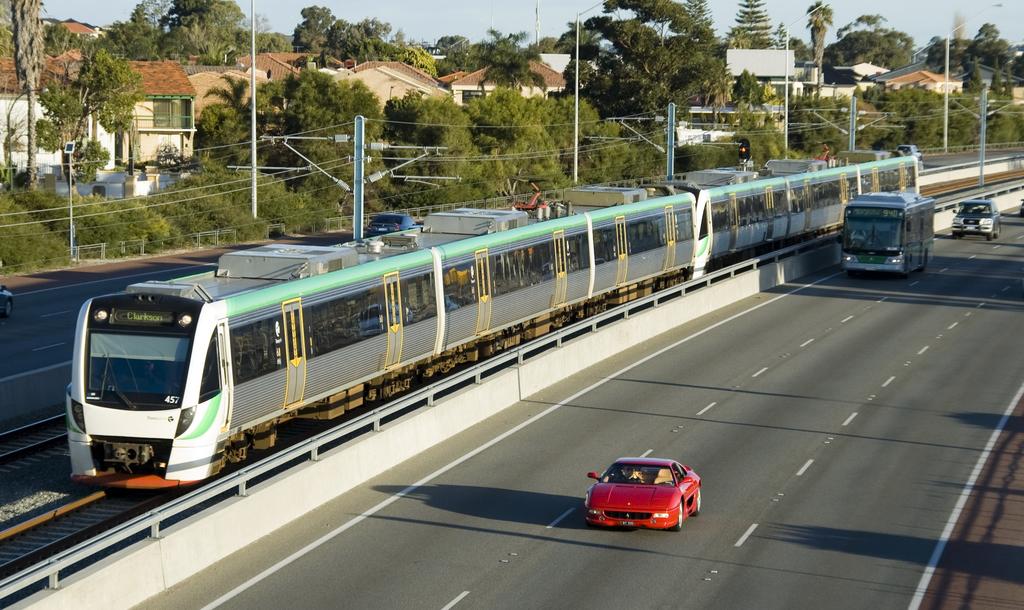Transurban ended up with a cash balance of $370 million at end 2010. $ 275 m of that amount is money provided by banks end of last year as part of a new $ 740 m debt package which also included the roll-over of $ 465 maturing M2 debt. The December 2010 cash balance is not enough to finish the M2 widening which costs $ 550 m.
A view few motorists have ever seen: The M2 at Devlins creek cuts through typical Australian bushland
Where would the additional lanes go here?
Let’s have a look at the cash flow on page 11 of Appendix 4d of the half yearly financial report just released.
Table 1:
http://www.transurban.com.au/appendix_4d_2010.pdf
Comments:
(1) Payment for Lane Cove Tunnel
The starting balance of $ 681.259 m (1/7/2010) contains $ 530.929 m for the payment of the Lane Cove Tunnel which actually costed $ 630.5 m
Table 2 (excerpt from Annual report 2010)
http://www.transurban.com.au/TRN021_AR10_Fins_FA3(1).pdf
The actual payment (see table 1) was $ 688.779 m. Therefore, Transurban lost $ 158 m on this transaction. Of course you could also call it Transurban’s part of the investment.
(2) Payment of distributions
Transurban paid distributions of $ 57 m in cash but issued new securities worth $ 113 m to satisfy other shareholders. In a Lateline Business interview with Transurban’s chief executive Chris Lynch:
TICKY FULLERTON: ….I mean, you could say that your security holders are paying for their distribution.
http://www.abc.net.au/lateline/business/items/201102/s3135853.htm
If shareholders had insisted to get their distributions in cash, the cash balance would have been:
$ 369.667 m actual balance 31/12/2010
– $ 112.874 m distributions as securities now paid in cash
——————-
= $ 256.793 m
– $ 275.605 m now let’s deduct the M2 widening component
——————
= $ -18.812 m and we are already in the red
Therefore, in the 1st half of the FY 2011 Transurban managed to stay afloat only by printing securities and having in the cash box money for the M2 widening.
And all this is happening in the context of the Wiki leaks publication of US cables from Riyadh on doubts about Saudi oil reserves and also the unrest in Egypt. This all means there could well be another oil shock during the construction phase of the M2 widening.
In an editorial “Oil’s slippery future” the SMH writes:
The one positive from a squeeze on oil prices (and it is nothing to be wished for) might be that it would force a change in transport decisions away from a reliance on motor vehicles. That might help reduce greenhouse gas emissions. Governments find it extraordinarily difficult to lead such a change, so powerful is the mystique of the petrol engine and the various industry and consumer lobbies which sustain it. A market-driven change, being unavoidable, makes easier the adjustment which politicians are reluctant to face.
http://www.smh.com.au/opinion/editorial/static-in-the-fibreoptic-20110210-1aoha.html?skin=text-only
Conclusion: So who in government and in the financing sector has the courage to draw the consequences and make these transport decisions by re-negotiating the M2 widening agreement in favour of a Transperth type of new business model in which Transurban runs electric rail on the median strip of its toll-ways?
http://perthtrains.nachohat.org/image/5934/
Related posts:
17/1/2011 Queensland Reconstruction Bonds more important than M2, M5 widening
http://www.crudeoilpeak.com/?p=2501
5/1/2011 Sydney’s M2 toll increase high above RBA inflation target (part 3)
http://www.crudeoilpeak.com/?p=2471
9/12/2010 Will Transurban ever pay back its debt? (part 2)
http://www.crudeoilpeak.com/?p=2373
22/11/2010 Yet more debt to finance Sydney’s tollway expansion (part 1)
http://www.crudeoilpeak.com/?p=2255
11/11/2010 Tollopoly on Sydney’s orbital
http://www.crudeoilpeak.com/?p=2131
9/11/2010 M2 widening increases Sydney’s oil vulnerability
http://www.crudeoilpeak.com/?p=2039
28/10/2010 Quick risk analysis for M2 widening (Part2)
http://www.crudeoilpeak.com/?p=2012
19/6/2010 M2 widening: Primary Energy Dilemma for cars
http://www.crudeoilpeak.com/?p=1631
Disclaimer: while all care has been taken to compile these articles the reader is advised to check all data and calculations. Such an exercise will also help the reader to really understand the problems, in particular the lack of economic and timely substitutes for oil.




